Advanced Search
Results 1381 - 1400 of 2131
LL7838AV
LL7838AV
HD7800B
HD7800B
HD7808B
GC and ENVICCO Organize Online Seminar "Recycled Plastics: Option or Survival?"
GC and ENVICCO Organize Online Seminar
"Recycled Plastics: Option or Survival?"
November 9, 2023, 1:30 - 3:30 PM, via Microsoft Teams.
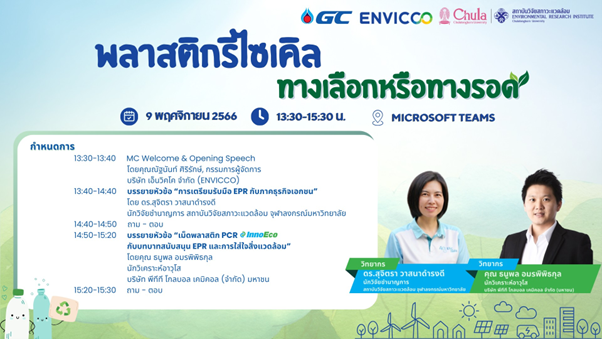
The seminar featured a distinguished and expert speakers on the principles of Extended Producer Responsibility (EPR), which extends the responsibility of producers to various stages of product's lifecycle, particularly in the areas of return, recycling, and disposal phases, to reduce the environmental impact of products. The speaker was Dr. Sujitra Vassanadumrongdee, Senior Researcher, Environmental Research Institute, Chulalongkorn University.
The Waste Crisis in Thailand
- Thailand generates approximately 27 million tons of waste per year, equivalent to 27 million cars
- We produce average of 1.14 kg of waste per person per day, higher than the average of lower-middle-income developing countries (0.79 kg/person/day)
- It's time for producers and consumers to share responsibility for the environmental costs incurred
- "Waste" is the responsibility of the "waste generator," according to the Polluter Pays Principle (PPP)
- "Waste" is not solely the burden of local administrative organizations. The state must address market failures that do not include environmental costs through mechanisms such as EPR, taxes/fees into funds, etc.
What is EPR?
EPR is policy principle used globally as a basis for legislation or measures that involve product manufacturers in taking responsibility for their products throughout their life cycle. The first law to adopt the EPR principle was Germany's Packaging Waste Management Act in 1991. Due to the success of this law in reducing the amount of packaging waste sent for disposal and increasing packaging recycling rates, various European countries began using the EPR principle as a basis for legislation to manage waste that is difficult for local authorities to handle, such as electronic waste, end-of-life vehicles, tires, and batteries.
Benefits of Future EPR Law Enforcement for Packaging Waste Management
- Recycled material prices will fluctuate less or will be stabilized
- Promotes new entrepreneurs in the market
- There will be transparency in the system, improving the quality of life for waste pickers (Saleng) and scrap shops
- The public can conveniently return used packaging
- Local Administrative Organizations (LAOs) will collect separately, and drop-off points will be available at malls, convenience stores, and gas stations
- There will be promotions for exchanging used packaging for new products
- The public will be more aware and will separate waste more
Currently, there are pilot projects and EPR laws in Thailand and neighboring countries. For example, the PRO Thailand Network project drives sustainable packaging management under the EPR principle. It is collaboration of leading partner companies in Thailand. Neighboring countries such as Singapore, Vietnam, Indonesia, and the Philippines have already enacted EPR laws to manage packaging waste, plastic waste, e-waste, and various product scraps.
In Thailand, draft of Sustainable Packaging Management Act has been prepared, and the Pollution Control Department has set roadmap to draft a CE/EPR law for packaging, aiming for enforcement by 2026, and draft law to promote CE by 2027.
GC and ENVICCO jointly presented on the topic of "PCR InnoEco by GC and their role in supporting EPR and environmental awareness" by Mr. Thanoopon Amornphiphitkul, Senior Analyst, PTT Global Chemical Public Company Limited.
.jpg)
Presentation Topics
1. ENVICCO’s PCR – Quality, Safety, and Environmental Impact
- ENVICCO’s PCR Plastic Circular Economy Collaboration across the Plastic Supply Chain
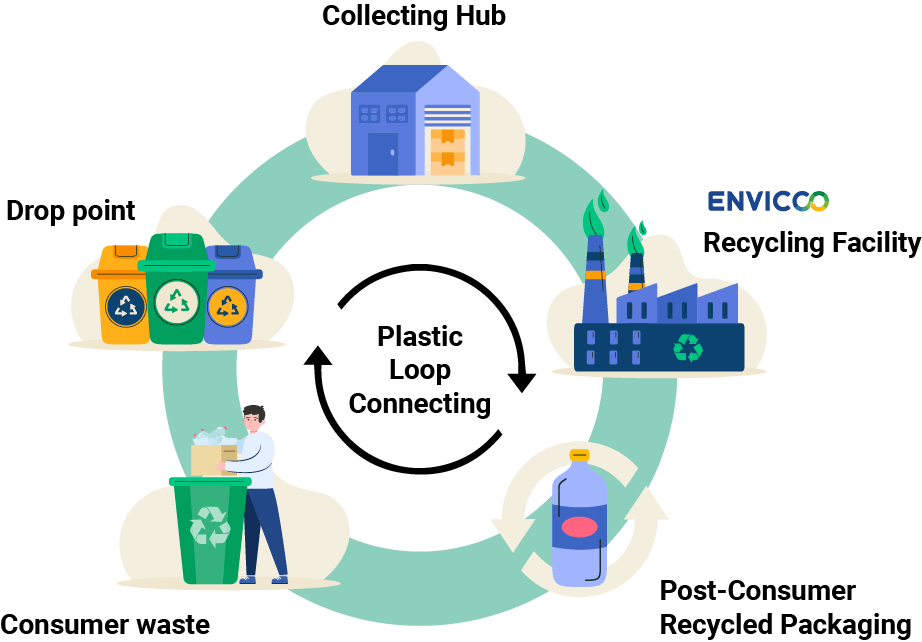
- Introducing products under the brand InnoEco by GC, made from post-consumer household plastic using European standard recycling technology to obtain high-quality Post-Consumer Recycled (PCR) plastic resins with properties comparable to virgin plastic
- 100% PCR PET food-contact plastic resins, the first in Thailand to pass safety standards from the Thai Food and Drug Administration (FDA), Ministry of Public Health. It can be used for food packaging of all sizes and thicknesses
- 100% PCR PET food-contact plastic resins that have passed international safety standards from both the U.S. Food and Drug Administration (US FDA) and the European Food Safety Authority (EFSA). It can be used to form recycled plastic packaging such as drinking water bottles and soft drink bottles
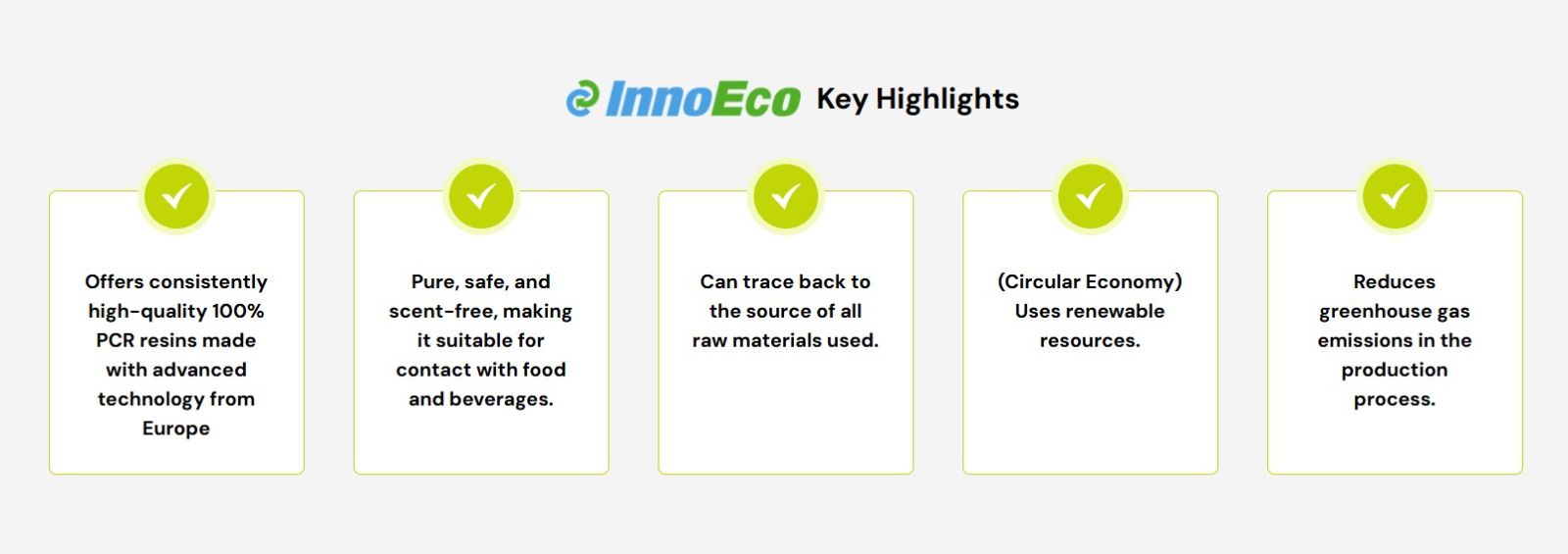
- 100% PCR HDPE packaging-grade plastic resins with advanced odor removal technology. It can be used to form recycled plastic packaging such as shampoo bottles, soap bottles, and oil gallons
- All raw materials are 100% post-consumer household plastic from Thailand. GC collaborates with ENVICCO to establish recycling waste management centers in several provinces, catering to people's lifestyles and promoting recycling behavior, as well as creating comprehensive community waste management system in Rayong, Nakhon Pathom, and other provinces. The ‘GC YOUเทิร์น’ platform is used to manage the process from sorting, collection, and transportation to the ENVICCO factory for sorting and cleaning before entering the recycling process. This involves property enhancement through world class technology and innovation, resulting in high-quality recycled plastic resins Furthermore, advanced traceability system is installed, enabling 100% tracking of the origin of the used plastic.
2. Challenges / Questions Regarding Recycled Plastic Resins
- Challenges in designing packaging for easy recyclability: The use of colored bottles, labels made of PVC, and printing directly on bottles make recycling more difficult.
- PET bottles can be repeatedly recycled due to technology that can remove foreign substances and improve the properties of PCR PET resins to be comparable to virgin plastic. It can be recycled repeatedly, but the color of the bottles will become darker. (Globally, recycled plastic resins tend to be darker and different from virgin plastic due to the cleaning and high-temperature production processes to ensure cleanliness and safety. The darker color of recycled plastic resins signifies environmental consciousness and safety.) In Europe and the United States, where the use of recycled content is widespread, almost equal to virgin plastic (recycling has been used for over 10 years abroad), bottle colors are darker. In the meantime, the Thai market is just beginning to use it, and brand owners need to communicate and educate consumers from the start.
- Challenges from consumer behavior, especially the lack of waste sorting, which makes recycling inefficient.
ECO “Upcycling Upstyling” Design
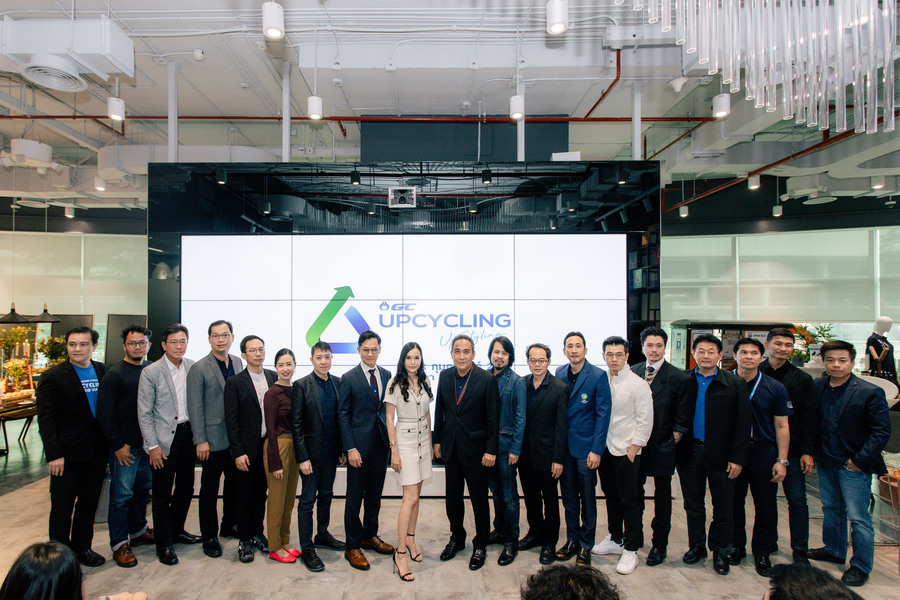
Today, the issue of limited resource use is becoming a hot debate topic issue intensively. In design field where always involves in the use of resources is also discussing about this issue as well resulting the expansion of many touchable work pieces finally. However, in order to view out a product design that meets the needs of the cost-effective and sustainable use of resources obviously, the past week, Global Chemical Public Company Limited (GC) has organized the “Upcycling Upstyling” Project, where leading designers from various fields have been organized to meet and conduct business matching with various operators. This project aims to merge innovation and creativity beyond the design and develop products that can expand business opportunities while promoting the best use of resources according to the Circular Living concept.
.jpg)
Even though GC has always been continued leading in the field of Circular Living through upcycling products, but for this “Upcycling Upstyling” program they have organized, it could be said that this is special and different when compared to other projects. This project steps up to the next step in upgrading upcycling products by focusing on educating and enhancing entrepreneurial skills in upcycling product design. Participated entrepreneurs will be developed and educated on materials from GC, along with design ideas from 6 world-leading professional designers, to expand and open up their perspectives, to think how to add value to used resources and transform into a variety of products that are full of beauty, save the world and meet the needs of real use under the concept of the project "Up Waste to Value with WOW! Style".
.jpg)
Regard to this program of GC which is now continue driving forward, it could be counted as the extension of how to response the needs of the plastic industry customers in order to promote and create designs that bring innovation and technology together through the concept of ECO-Design from 3 main plastics: Original plastics, Recycled plastics and Bio plastics.
However, this project is not only leveraging entrepreneurs who are customers and partners of GC to step up adding value to their own products and to meet the challenges facing the global plastics industry, but GC also emphasizes on the importance of resource awareness, value and sustainability aligning with the principle of Circular Economy to extend to the concept of Circular Living to be applied in daily life. Moreover, to build a business network and expand awareness of environmental protection and sustainability to all sectors as well.
.jpg)
For the “Upcycling Upstyling” project, there are 19 companies selected for the project, which come from various industries such as packaging operators, product manufacturers, fishing industry product (Fishing nets) manufacturers and Medical field facilities (hospital), etc. The experts (Expert of Style) that will co-develop the work with the operator are as follows;
.jpg)
.jpg)
1. Khun Ployphan Teerachai and Khun Decha Arjananan of THINKK STUDIO brand and Khun Teerachai Supametikulwat of Qualy brand, an expert in the industrial design field..jpg)
.jpg)
2.Khun Korakot Aromdee of KORAKOT brand and Khun Supapong Sornsang of jird brand, an expert in Craft & Wood Design..jpg)
.jpg)
3.Khun Rarin Thongma of O&B brand and Khun Yuttana Anothaisinthavee of The Remaker brand, an expert in Fashion Design field..jpg)
.jpg)
4.Khun Ek Thongprasert of Ek Thongprasert brand and Khun Saran Yukongdee of SARRAN brand, an expert in Material & Jewelry Design field..jpg)
5.Khun Somchana Kangvanjit of Prompt Design brand, an expert in Packaging Design field.
.jpg)
6.Khun Ratiwat Suwantrai from Openbox brand, an expert in Architecture Design field.
.jpg)
The participants of the project who are successfully matched with entrepreneurs will be joint thinking and creativity further to realize upcycling products that promote sustainable use of resources. It is no longer to wait anymore for the results of such cooperation. This is not only to support operators to increase their competitiveness, but also to contribute awareness and understanding of the selection of each type of plastic. This will lead to a larger goal, sustainable resource use in line with GC's commitment to Circular Living as well.
Bio Economy
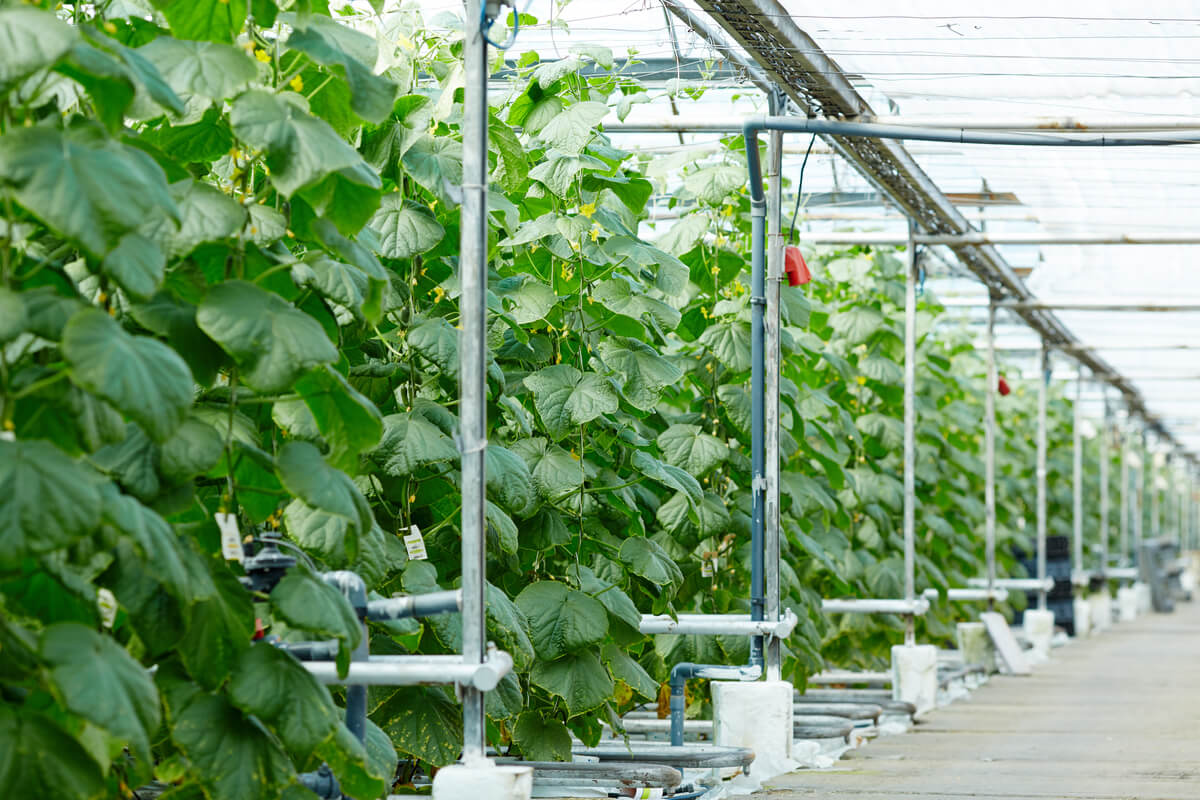
How long has it been that the world is driven by traditional knowledge causing many following problems such as the economic slowdown or even environmental crisis which is getting worst intensively day by day. Until now, when the future seems to face the dead end, of course several new ideas or methods starting to be presented as a solution as well. One of the gates of hope that has been spoken for a while is Biological Economy which is classified as one of the backlash of the New Economy. But what is the biological economy? So what are the benefits? This article will take you to find the answer together.
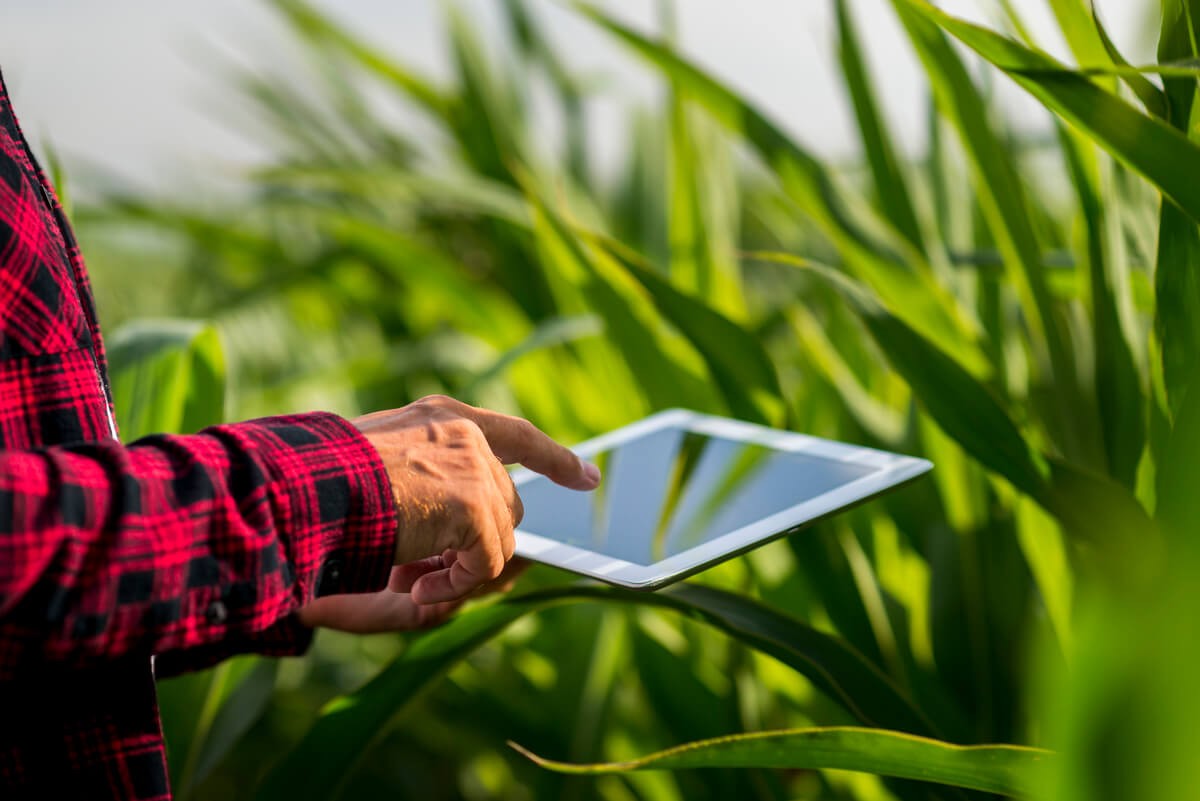
What is Bio Economy?
Bio Economy is to apply the knowledge of biotechnology to agriculture in order to add value to the product by introducing innovations to strengthen the agricultural sector in the economy and create more competitiveness. Shifting from creating original products to creating innovative manufacturing processes and products for the higher value needs of consumers.
The Bio Economy focuses on creating a sustainable bio-resource economy in line with the 17 Sustainable Development Goals (SDGs) set by the United Nations. In 17 goals, 11 targets of Bio Economy issues are included as follows;
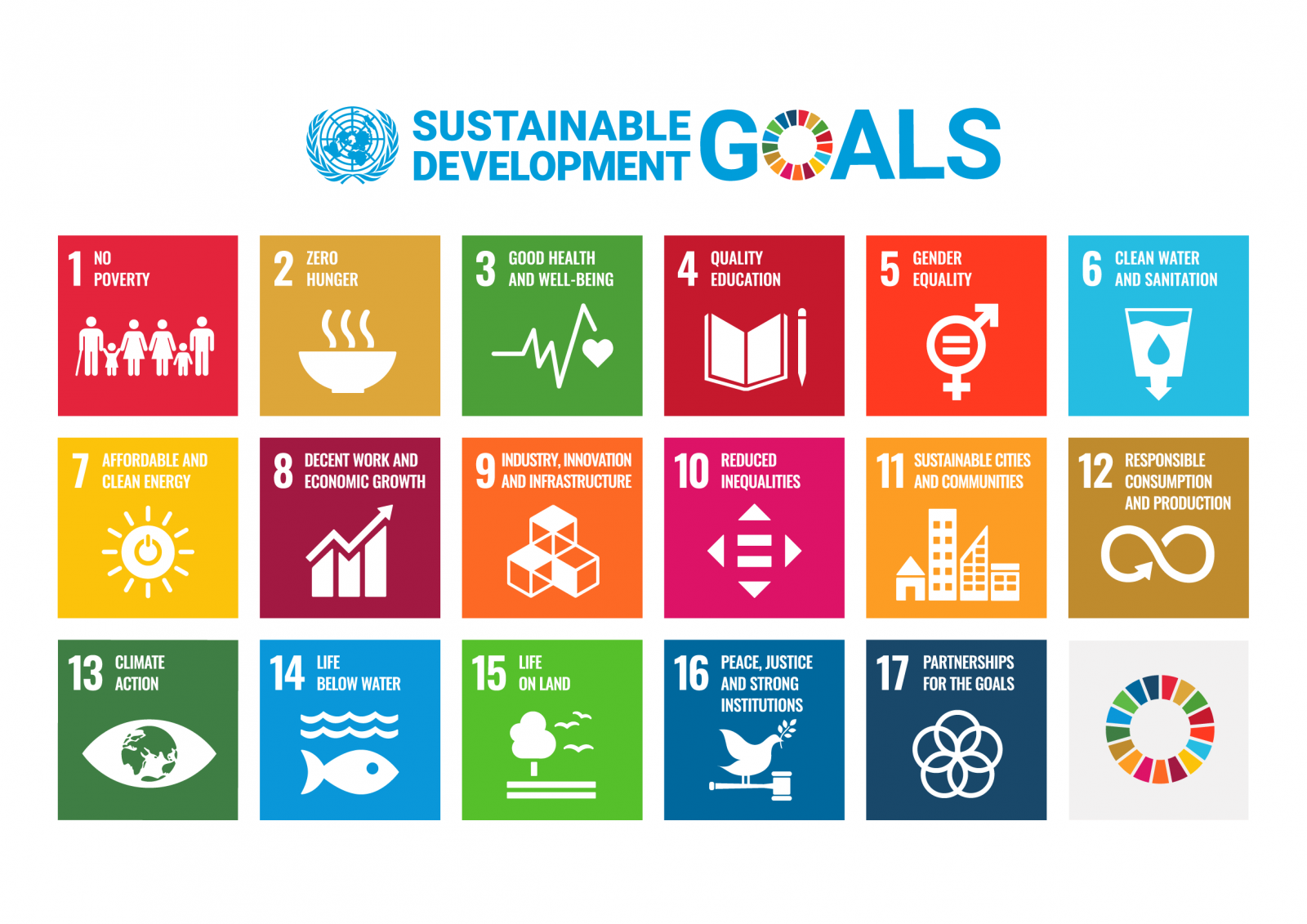
Goal 1: Poorness elimination
Goal 2: Establishing food security and promoting sustainable agriculture
Goal 3: Good health and well-being
Goal 7: Accessible Clean energy for all
Goal 8: Valuable recruitment and economic growth
Goal 9: Industry Innovation Infrastructure
Goal 10: Reducing of inequality
Goal 12: Sustainable consumption and production plans
Goal 13: Climate change handling
Goal 14: Making use of the oceans and marine resources, and
Goal 15: Making use of land ecosystems
.jpg)
Additionally, the biological economy is also linked to the Circular Economy, an economy that emphasizing on the use of various materials and products at the mots efficiency until complete its life cycle. It leads to the sustainability of the entire economy by using resources wisely and reduce pollution which causes the environment (Zero Waste) as well.
Besides, the biological economy is also related to the Green Economy, which focuses on solving the world pollution problems. And, it might be linked to bioinformatics such as the use of sensors to measure data in every step of the manufacturing process and then use the data with AI to analyze for finding ways to improve and reduce energy consumption or increase productivity by using the same volume of energy as in the past.
How good is Bio Economy?
Bio economy will play a role in helping solve many of today's global problems. Bio Economy knowledge in technology and innovation field will help it meets the basic human needs and also support the development of agriculture and food such as creating variety of new or improving the new production methods, etc.
In addition, the Bio Economy can help raising industry and environment to create new products made from bio plastics and new materials meanwhile also being able to switch some agricultural products into biological processes to be used as biofuel or bio-ethanol. This enhances the well-being of society, reduces carbon emissions and waste as well as increase the production efficiency by alternative energy plus increase the efficiency of food production well
.jpg)
The National Science and Technology Development Agency (NSTDA) has further discussed the advantages of the biological economy as follows;
1. Bio Economy is a sustainable mechanism in line with the 17 United Nations Sustainable Development Goals.
2. The biological economy focuses on reducing resource consumption and increasing production efficiency.
3. The biological economy creates new products and create a continuous industry with a high economic impact.
4. Biological economy helps to reduce emissions and carbon dioxide.
5. The bio-economy supports the production of alternative energy such as biodiesel, ethanol and biogas.
6.Bio Economy increases labor market size, improves the quality of life, accesses to products and medical services.
.jpg)
Thailand is ranked at the 8th highest biodiversity area in the world, utilizing the wisdom base on life and environment accumulated since the past and combines with knowledge of science and technology to understand various biological properties. It could be an important starting point, leading to the creation of products that expand into different industries in the future such as food production, medical treatment, Cloths manufacturing and others appliances. All of these are the driving force made from Bio Economy. Creating both of value and price for economy of country sustainably.
“ENVICCO and Pepsi Launch the First Use of InnoEco PCR PET Plastic in Thailand”
April 5, 2023 – ENVICCO Company Limited (ENVICCO), company in the GC Group, in collaboration with its partners, Suntory PepsiCo Beverage (Thailand) Co., Ltd., and the Property Management of Chulalongkorn University (PMCU), held press conference for the official launch of the “Pepsi Recycled PET Bottle Campaign.” This initiative aims to sustainably promote environmental awareness by announcing their readiness to be the first in the carbonated soft drink market to use 100% recycled PET bottles (100% PCR PET bottles), which will be available in April 2023 under the exciting campaign “Conscious Refreshment, Bold Change for the World.” This reinforces their position as leading carbonated soft drink brand that continuously introduces new trends to consumers and enhances their image as cool, youth-favorite brand that cares about the environment. The first significant step involves a collaboration with PMCU to install specially designed bins for PET bottles throughout the Siam Square area from this Songkran period until December 2023. This is in partnership with ENVICCO, producer of internationally standardized and Thai FDA-certified PCR PET, promoting Bottle-to-Bottle Recycling towards a circular economy.
Mr. Anawat Sangkhasap, Chief Marketing Officer of Suntory PepsiCo Beverage (Thailand) Co., Ltd., stated that this campaign marks their readiness to be the first in the carbonated soft drink market to use 100% recycled bottles, starting with 550 ml Pepsi® bottles. This aims to tangibly reduce the use of virgin PET plastic and reflects their commitment to developing environmentally friendly products, encouraging the younger generation to pay more attention to plastic waste issues and post-consumption packaging management.
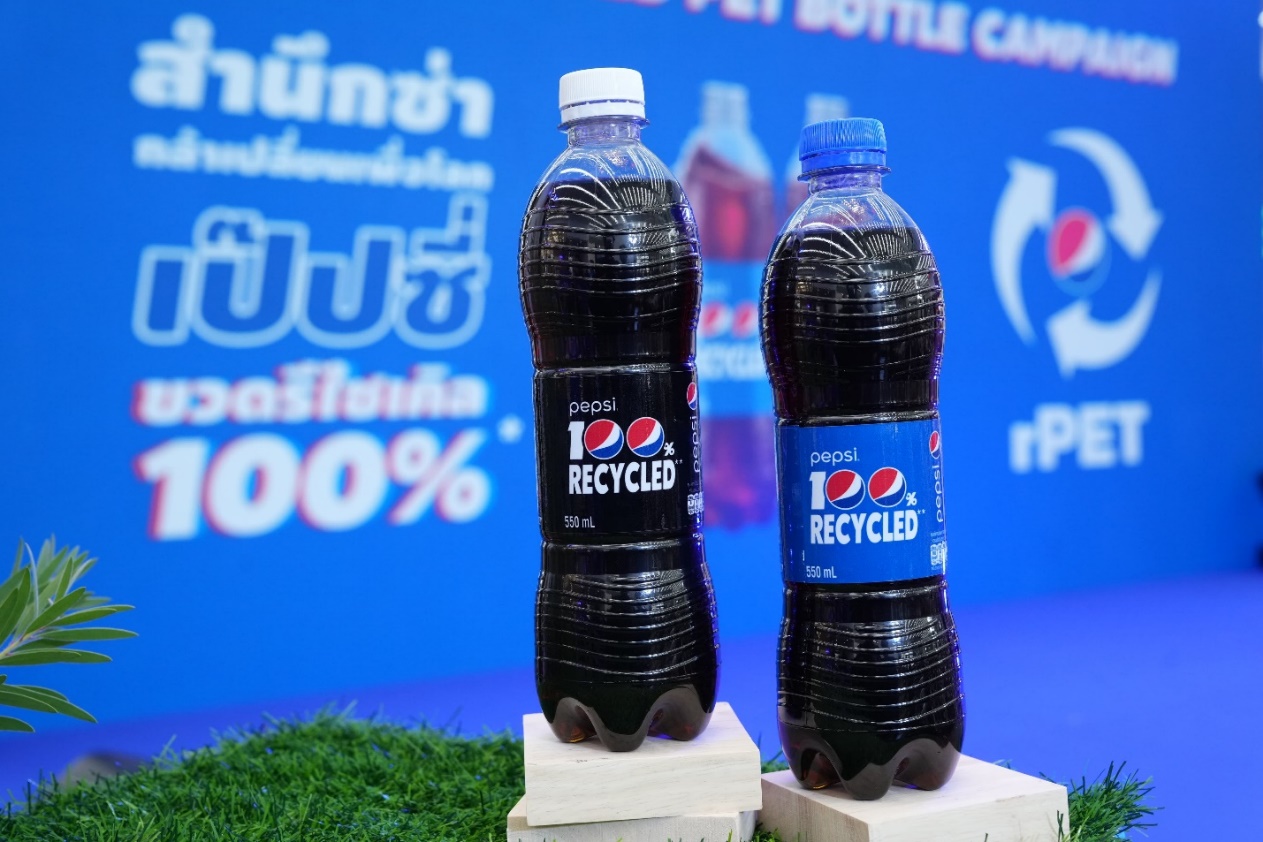
Mr. Vorrapong Sukteera-anantachai, Director of the Property Management Office of Chulalongkorn University (PMCU), mentioned that this campaign aligns with the SAMYAN SMART CITY concept, which envisions developing the area into innovative district that creates value for the community and society while enhancing quality of life. It also supports the Waste Management project in collaboration with CHULA ZERO WASTE, which operates based on the principles of waste reduction at the source and the benefits of waste management at the end of the process, in line with the Zero Waste concept.
.jpg)
Mr. Natthanun Sirirak, Managing Director of ENVICCO Company Limited, GC Group company, said that as a producer of high-quality recycled plastic, developing PCR PET (Post-Consumer Recycled PET) products, their key objective is to return value to used plastic by transforming it into high-quality new products. All raw materials are 100% post-consumer plastic from Thailand, sourced through partner networks and various communities. Utilizing advanced recycling technology and controlling the entire production process with European standard laboratories within the factory ensures the production of high-quality,100% PCR PET food-contact resins under the brand InnoEco by GC. ENVICCO is the first in Thailand to achieve international safety standards, including US FDA and Thai FDA certification, allowing its use in food contact packaging. The company has also received numerous international awards, guaranteeing the quality and reliability of ENVICCO. This confirms that the PCR PET recycled plastic produced for Suntory PepsiCo Beverage (Thailand) Co., Ltd., for Pepsi beverage packaging has outstanding properties, is clean and safe according to Thai FDA and international standards and supports sustainable resource management.
Amazing Plastic Product Design for Future Homes from Creative Plastic Academy 2021 by GC and CEA
The world is challenging us on multiple fronts: an aging society, natural disasters, and the COVID-19 pandemic… So how will homes of the future meet our lifestyle needs?!?!
Creative Plastic Academy 2021 was born from a collaboration between PTT Global Chemical Public Company Limited (GC) and the Creative Economy Agency (CEA) to enable designers to comprehensively learn and understand plastics, and to design products for future living. Working with expert instructors from various institutions, the project addresses Universal Design for multi-generational living, Preventive Houses to cope with disasters, and Hygienic Houses for pandemic situations. The award-winning products in each category are as follows:
1. Universal Design - Health-Conscious Fish Sauce Bottle (Kidney & Heart) by Team Baby Boss
Kidney & Heart is a condiment bottle (for fish sauce/sauces) designed to control sodium content in cooking. Shaped like a kidney and heart—organs affected by excessive salt consumption—to raise users’ awareness of health impacts. The handle design is convenient for all users, especially the blind, elderly, and those with weak arm muscles, enabling them to cook with accurate and appropriate daily measurements.
The plastics used for the health-conscious fish sauce bottle are PP for the cap and handle, HDPE for the bottle body via injection molding, and silicone for the heart and kidney components.
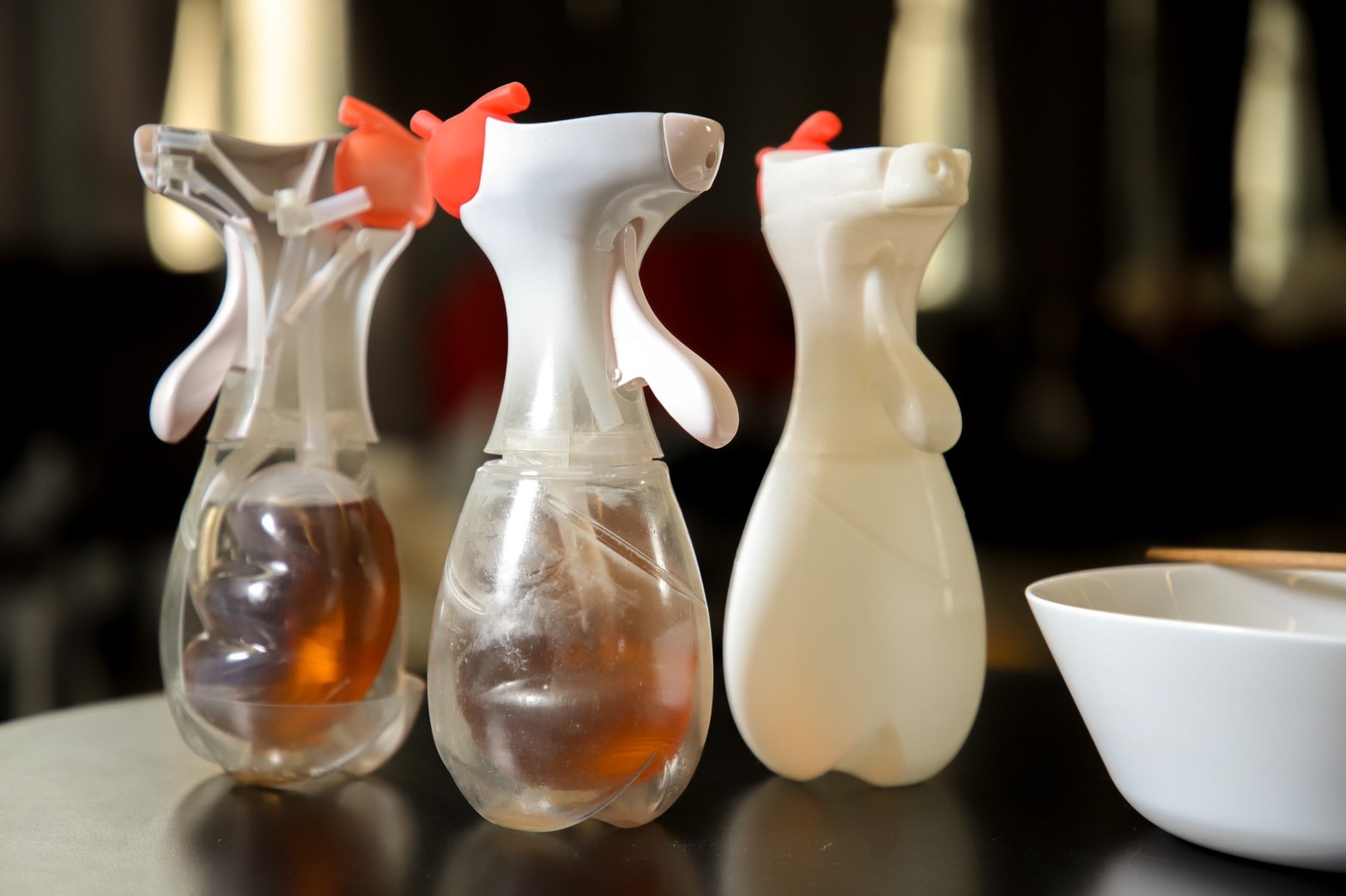
2. Preventive House - Floating Outdoor Chair (PAR~LOY) by Team SYMmetrical
PAR~LOY is an outdoor table and chair set that becomes useful during floods. The design applies the floating principle of Catamaran boats, allowing the chairs to be disassembled and float on water. They can be adapted as storage units capable of supporting up to 160 kilograms, while the table can be converted into an evacuation walkway.
The plastics used for the floating outdoor chair are LLDPE via rotational molding and PU foam for the chair components, with wood-plastic composite for the table.

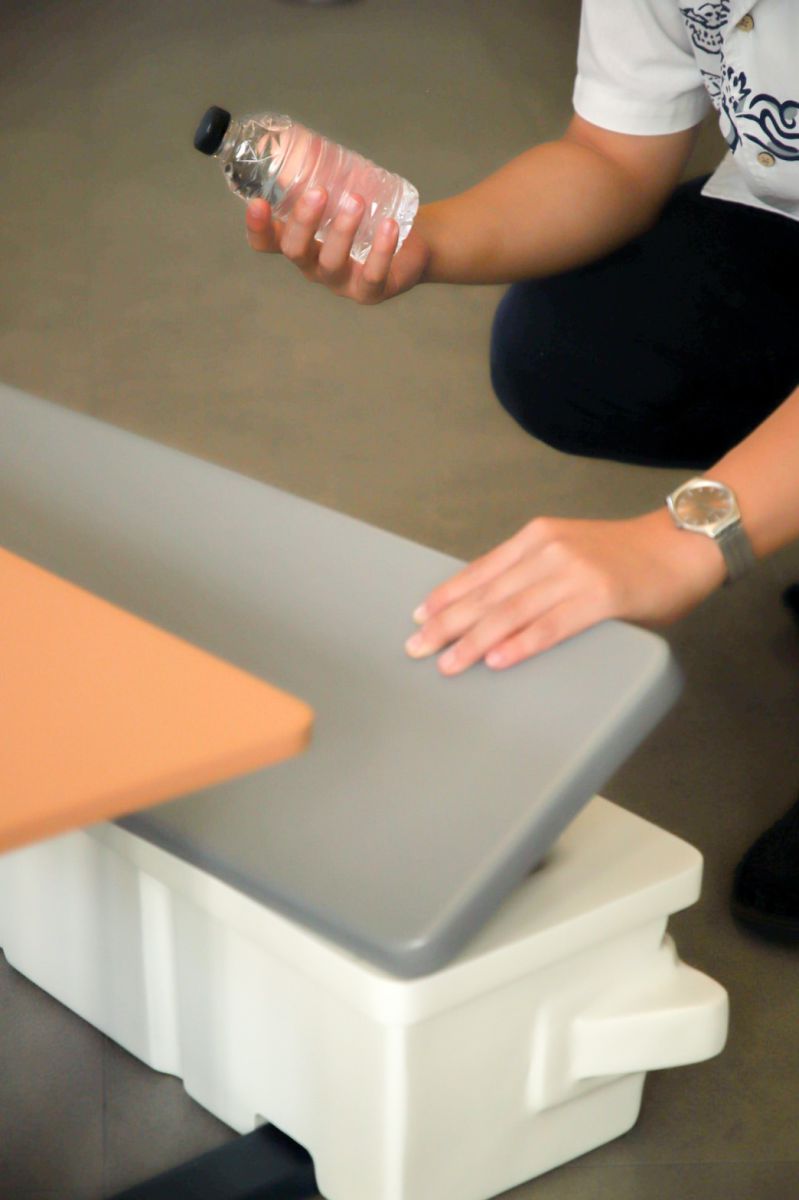 | 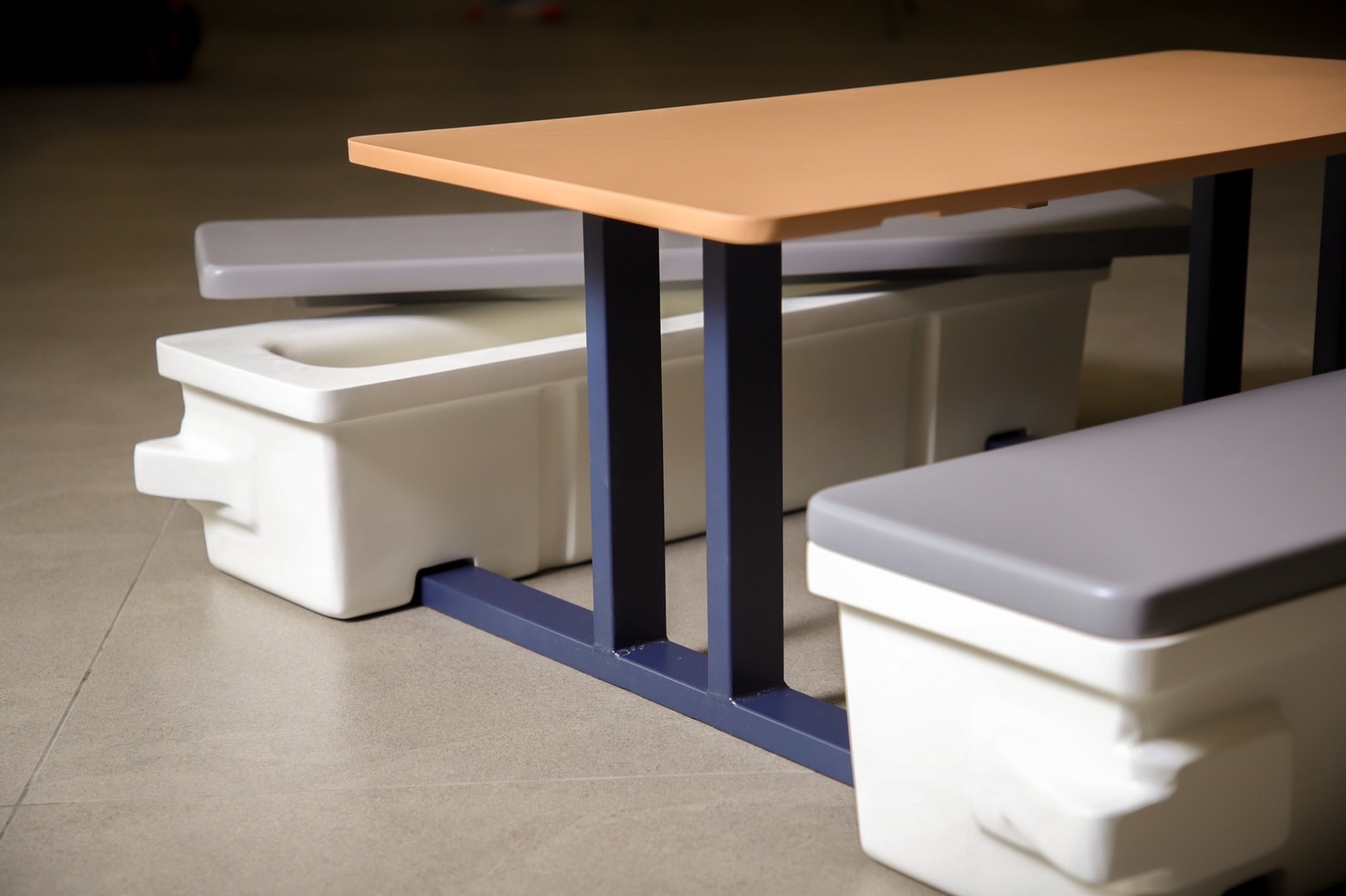 |
3. Hygienic House - Virus-Prevention Door (Digital Door Lock) by Team Sandbox
DIGITAL DOOR LOCK is a password-operated door handle set designed with consideration for COVID-19 virus transmission. It features virus-killing functions for personal items using UV light, an alcohol spray sensor, temperature measurement, and a disposal slot for face masks before entering the home. This creates confidence in cleanliness and safety for users both when leaving and entering their residence.
The plastics used for the virus-prevention door are high-gloss PC for the black door handle frame, and stainless steel for the handle grip.
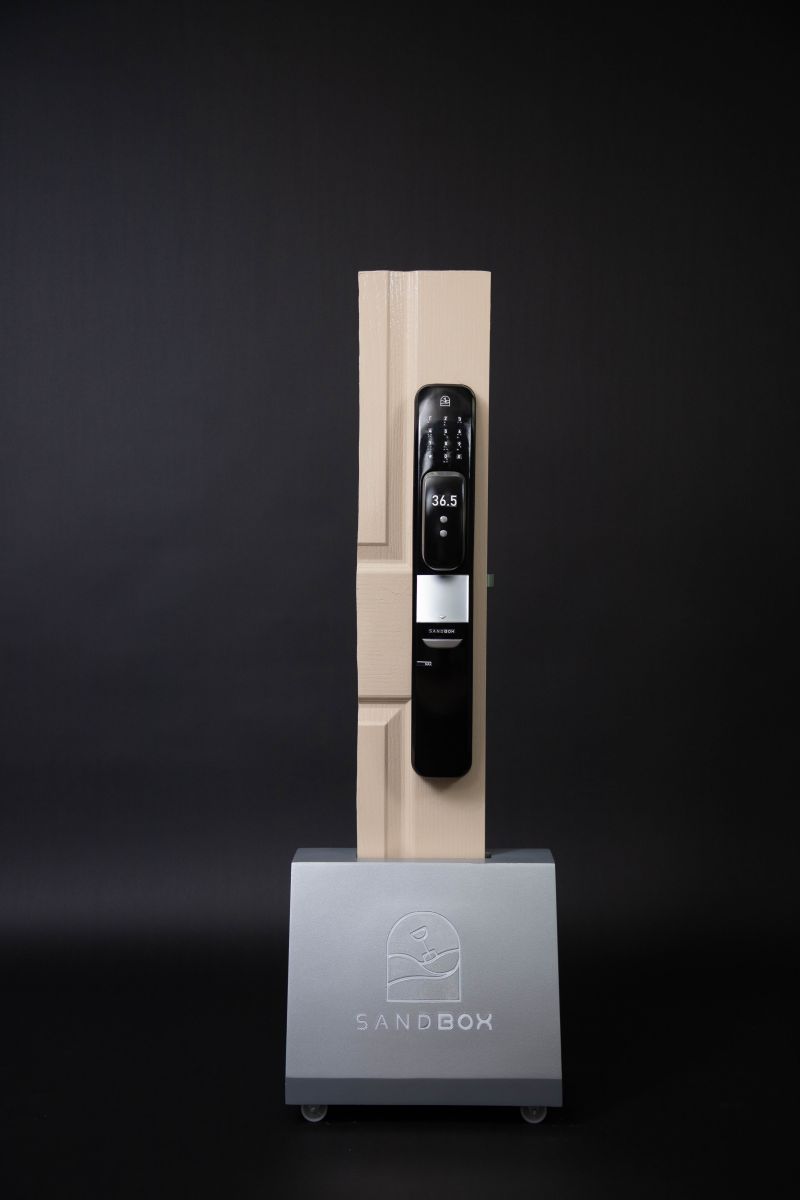 | 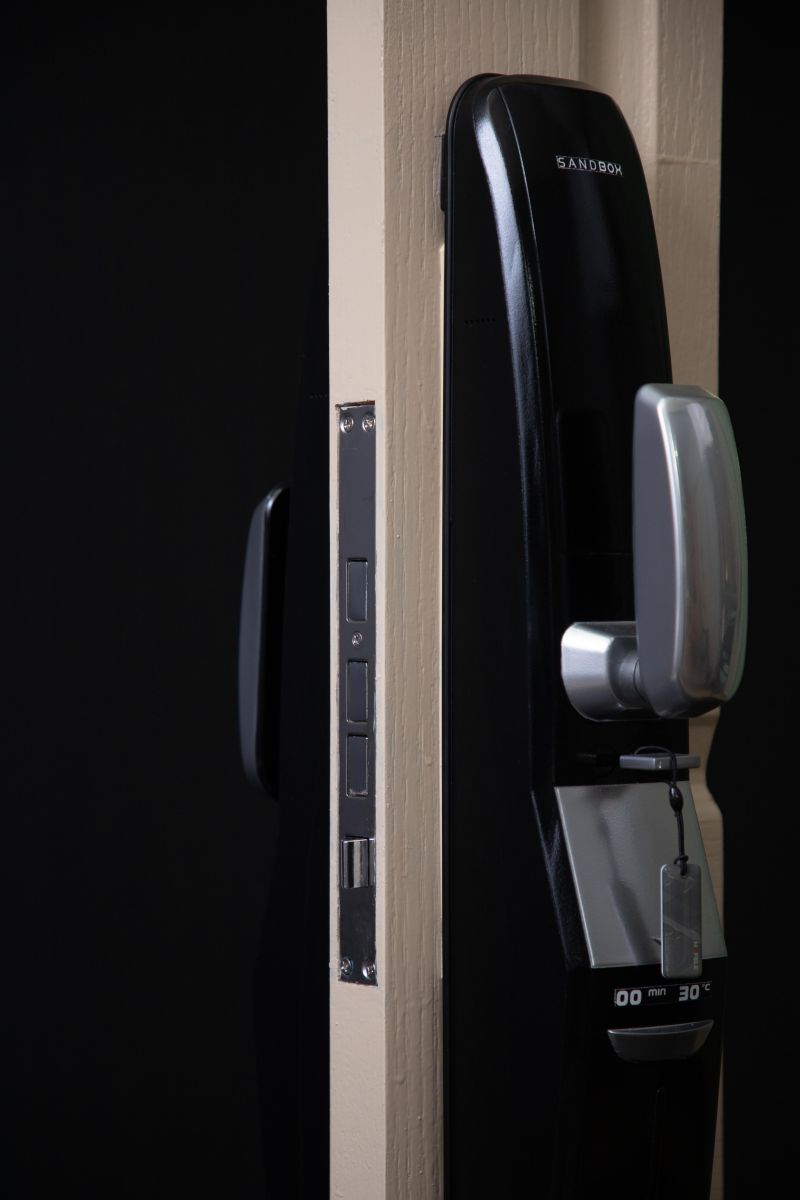 |  |



.JPG)
